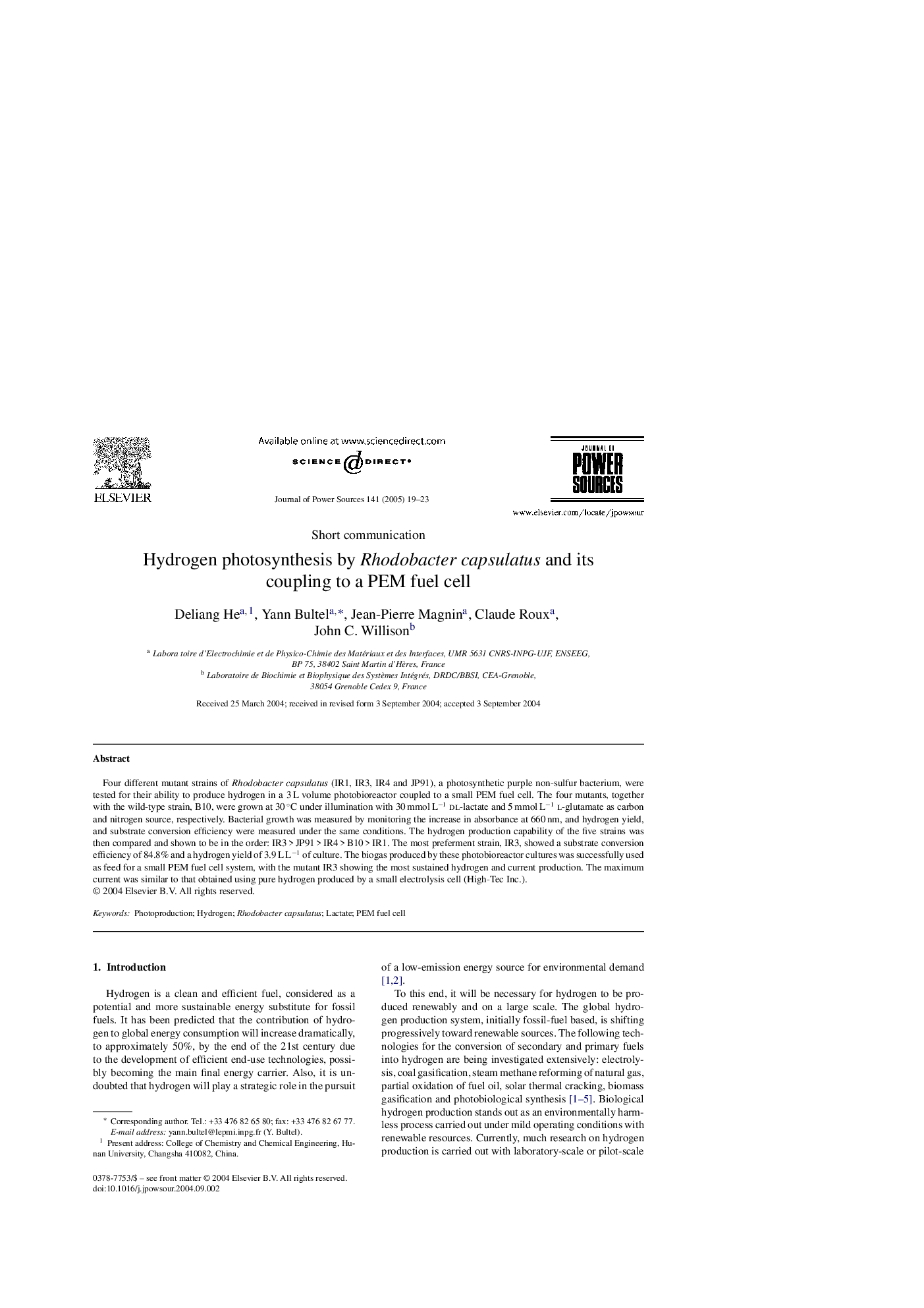| Article ID | Journal | Published Year | Pages | File Type |
|---|---|---|---|---|
| 10568408 | Journal of Power Sources | 2005 | 5 Pages |
Abstract
Four different mutant strains of Rhodobacter capsulatus (IR1, IR3, IR4 and JP91), a photosynthetic purple non-sulfur bacterium, were tested for their ability to produce hydrogen in a 3 L volume photobioreactor coupled to a small PEM fuel cell. The four mutants, together with the wild-type strain, B10, were grown at 30 °C under illumination with 30 mmol Lâ1dl-lactate and 5 mmol Lâ1l-glutamate as carbon and nitrogen source, respectively. Bacterial growth was measured by monitoring the increase in absorbance at 660 nm, and hydrogen yield, and substrate conversion efficiency were measured under the same conditions. The hydrogen production capability of the five strains was then compared and shown to be in the order: IR3 > JP91 > IR4 > B10 > IR1. The most preferment strain, IR3, showed a substrate conversion efficiency of 84.8% and a hydrogen yield of 3.9 L Lâ1 of culture. The biogas produced by these photobioreactor cultures was successfully used as feed for a small PEM fuel cell system, with the mutant IR3 showing the most sustained hydrogen and current production. The maximum current was similar to that obtained using pure hydrogen produced by a small electrolysis cell (High-Tec Inc.).
Related Topics
Physical Sciences and Engineering
Chemistry
Electrochemistry
Authors
Deliang He, Yann Bultel, Jean-Pierre Magnin, Claude Roux, John C. Willison,
